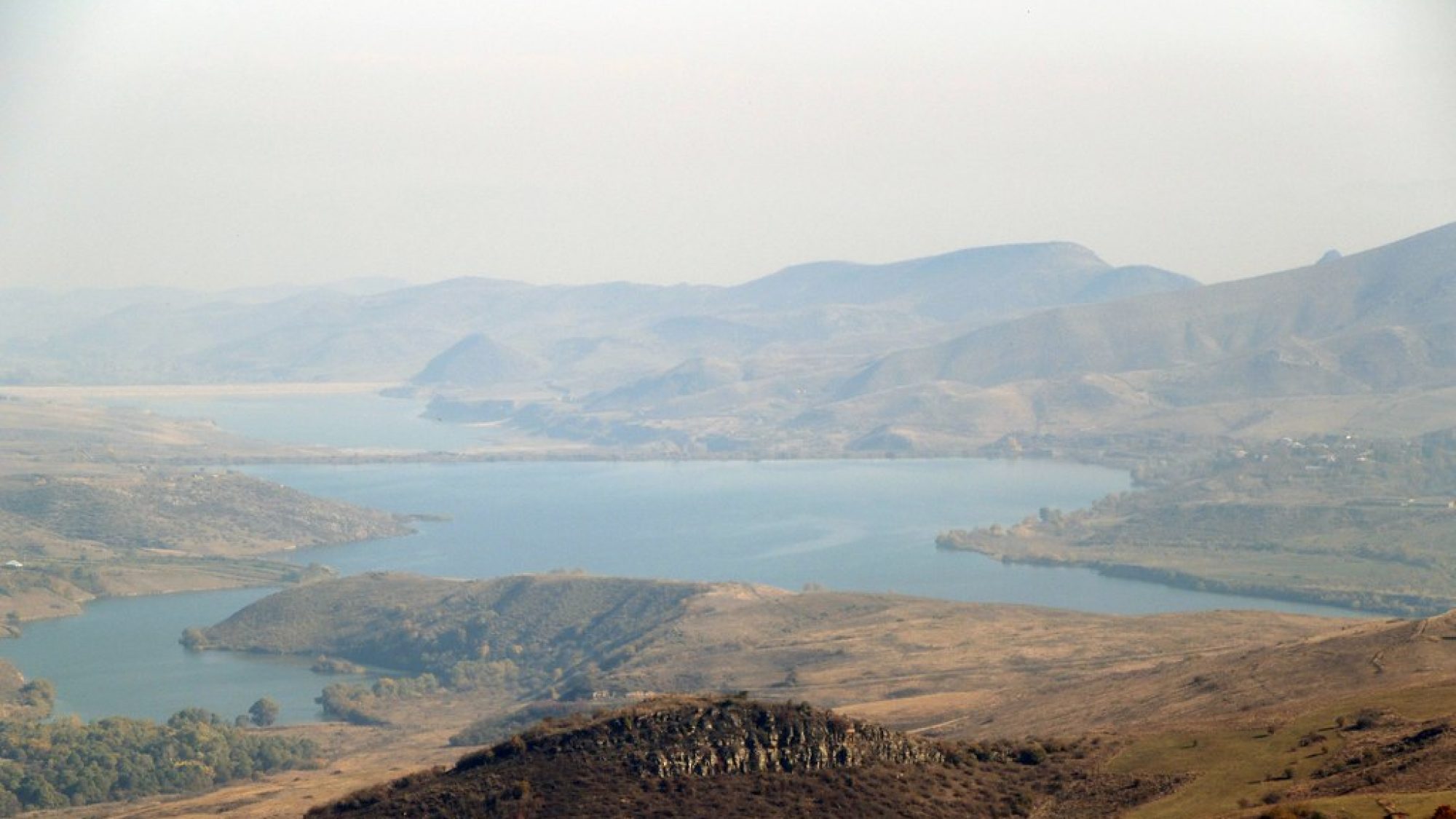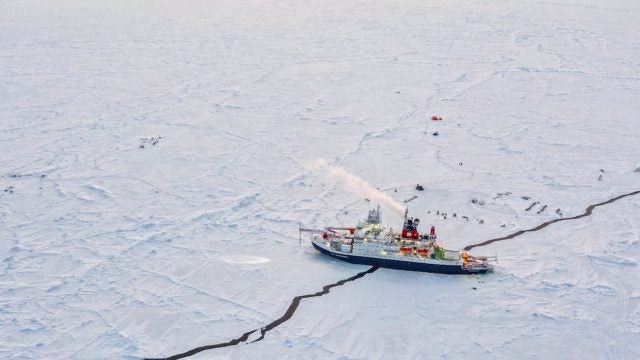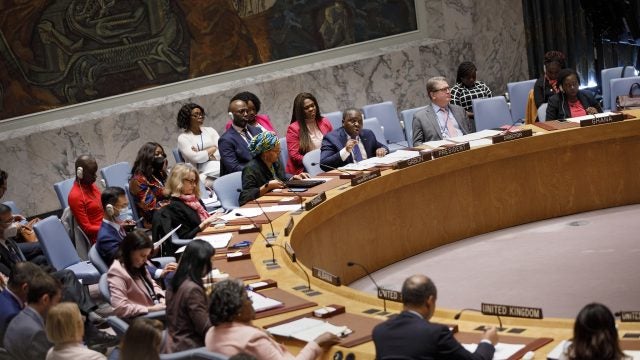
Title: Inclusive Governance in Upper Karabakh Can Bring a Lasting Azerbaijan-Armenia Peace
The recent tragic war between Armenia and Azerbaijan brought the parties closer than ever to a final peace settlement. The three-decade-long peace talks have focused on the territorial questions at the expense of the core issue in the conflict-ethnic coexistence in the Upper Karabakh region of Azerbaijan. The end of the armed conflict provides an unprecedented opportunity to address questions of security, local governance, and cultural self-rule that will ensure the coexistence of ethnic Armenians and Azerbaijanis in this historic region.
The so-called “Forty-Four-Day War” between Armenia and Azerbaijan in late 2020 resulted from the abject failure of the protracted peace process that was mediated by the OSCE Minsk Group co-chairs: The United States, France, and Russia. The war was a continuation of the tragic armed conflict in 1991-1994 triggered by Armenia’s territorial claims to Upper Karabakh (Nagorno-Karabakh), Azerbaijan’s province populated by a majority of ethnic Armenians. A devastating war in the early 1990’s resulted in Azerbaijan’s heavy defeat, loss of significant territory, and an overwhelming refugee crisis. The following three-decade-long peace talks that were centered on a “land for peace” formula ended in a stalemate with “no war, no peace.”
Paradoxically, the latest tragic war brought the parties closer to a final peace settlement than ever by removing the binding constraints on mutual compromises. Azerbaijan’s recovery of the territories previously occupied by Armenia ensures the return of about 750 to 800 thousand Azerbaijani displaced citizens (IDPs) to their lands – a significant political and social burden on the government. Armenia’s withdrawal from the occupied territories—as stipulated in four UN Security Council Resolutions and a Russia-brokered trilateral Agreement—eliminates the most crucial hurdle to peace with Azerbaijan. In addition, the new political arrangement will likely incentivize Armenia to protect ethnic Armenians’ rights in Upper Karabakh through other means than territorial expansion. Consequently, the removal of the most significant bottlenecks from the negotiating table – the question of occupied territories and IDPs’ right of return – changed the parties’ incentives and created an opportunity for a final peace settlement.
Questions without Easy Answers
A Russia-brokered trilateral Agreement on November 10, 2020 ended the armed conflict, moving the process into the diplomatic sphere. However, the parties need a new framework because the Minsk Group-proposed conflict resolution principles primarily focused on the political status of Upper Karabakh at the expense of the central issue in the conflict – the coexistence of ethnic Armenians and Azerbaijanis in Upper Karabakh.
The parties now have to address the most consequential policy questions omitted in the past talks: how does one safeguard the security, culture, and identity of ethnic Armenians and ethnic Azerbaijanis once they gradually return to Upper Karabakh? How does one build inclusive governance in Upper Karabakh where both majority and minority ethnic groups will coexist, cooperate, and govern? How does one ensure that there will not be a new armed conflict between these two communities and a new secessionist movement will not arise that could cause a new Armenia-Azerbaijan war? Finding emergent solutions to these critical questions requires intense negotiations, dialogue, and local contestation by the two ethnic groups on the ground.
Making Ethnic Coexistence as the Core Issue
The conflict’s historical, ethnic, and territorial complexity partially resembles other protracted conflicts, such as those in Northern Ireland and Bosnia and Herzegovina. The Good Friday Agreement and the Dayton Accords’ success in solving these respective conflicts were made possible by putting the coexistence of several ethnic communities at the center of the peace processes. The parties and mediators delicately balanced competing security, human rights, and governance considerations to reach this ultimate goal.
Similar considerations are relevant in this case. Protecting the security, culture, and identity of about fifty thousand ethnic Armenians currently living in Upper Karabakh dominates Armenia’s thinking. Equally, the national security and security of about forty thousand ethnic Azerbaijanis who will eventually return to Upper Karabakh underscores Azerbaijan’s thinking. As a state, Azerbaijan does not consider itself entirely viable regarding its security, geography, and economy without Upper Karabakh. Armenia’s military control of this region makes Azerbaijan’s defense a practical impossibility, as evidenced by the 1988-1994 conflict’s disastrous consequences for Azerbaijan. Proper balancing of these critical considerations will likely underpin the success or failure of any final peace settlement.
Three crucial principles from past successful peace processes regarding security, local governance, and cultural self-rule can bridge the parties’ dichotomous positions, paving the way for ethnic coexistence in Upper Karabakh. The peaceful coexistence of these two communities in ethnically mixed villages in Georgia is an example for positive deviance and a shared vision to be re-cultivated in Upper Karabakh.
Security of Ethnic Groups
A security dilemma remains the critical issue for both communities in Upper Karabakh. Security requires demilitarization and in particular, disarming and disbanding of all local militias. This approach proved critical in preventing inter-community violence between Unionists and Irish nationalists in Northern Ireland before the parties struck a final peace deal. Demilitarization will also ease the eventual return of ethnic Azerbaijanis to Upper Karabakh and eliminate the risk of rocket attacks from the area into civilian settlements outside the region—a substantial national security risk for Azerbaijan. While a Russian peacekeeping force is the temporary security guarantor in Upper Karabakh, integrating a UN peacekeeping force could add checks and balances into the monitoring scheme. The UN and other international institutions can help the parties gradually build a local police force representative of both ethnic groups in order to provide permanent security in the region in the future.
Multi-ethnic Public Administration
Designing governance institutions to administer four Upper Karabakh districts would create an equal participation opportunity for both ethnic groups in the region’s economic and political spheres. Allocating a fixed percentage of positions in local executive bodies, including the police force and courts, to each ethnic group may resolve representation and potential discrimination problems. Local municipal and mayoral elections, rather than political appointees, may also provide a stable central-local government power distribution. Checks and balances and minority veto power over majority decisions on vital issues affecting each districts’ social, cultural, and economic life will also be crucial in blocking any potential abuse of power.
Importantly, the parties should avoid the pitfalls of an ethnic-based governance system where one ethnic group monopolizes power or voting behavior happens on ethnic lines due to weak institutions. To mitigate this potential risk, civil society-led reconciliation efforts in the area can cultivate programmatic actions and local administration crossing ethnic lines.
Cultural Autonomy
The cultural and historical significance of Upper Karabakh is immense for both communities. The region, with middle-age churches and mosques, tombstones, monuments, architecture, art, prominent artists, cultural and religious schools has a strong bearing on the identity formation of both Azerbaijan and Armenia as young nations. Thus, preserving distinct cultural heritage through cultural self-rule could address this major friction point.
The international human rights regime of minority protection – the cultural autonomy model – can bridge the parties’ seemingly incompatible positions by decoupling minority rights from the territorial question. Many EU countries, including Poland, Romania, Hungary, implement this model wherein a minority group’s guaranteed political, cultural, language, religious, economic, and social rights extend to a given state’s whole territory. Azerbaijan and Armenia’s being party to the Council of Europe’s Framework Convention on Protection of Minorities and the UN framework creates additional guarantees and verifiable mechanisms to protect ethnic Armenians’ distinct culture, history, language, and religion in the area. Regular monitoring and verification by UNESCO and the Council of Europe could ensure adequate protection of such minority rights in Upper Karabakh.
How Can the United States Support the Peace Process?
From a conflict resolution perspective, the parties have entered into the most challenging and sensitive phase in their relationship. Lacking direct diplomatic relations, the parties rely heavily on Russia as the primary mediator and enforcer of the existing agreements. Establishing diplomatic ties and focusing on immediate needs such as sharing minefield maps, humanitarian assistance, exchange of prisoners of war, demarcation of the borders and re-opening transit routes could create momentum for normalization of ties between these countries. As a principal Minsk Group co-chair and as the global power that both Azerbaijan and Armenia trust, the United States can play a pivotal role. The Key West peace talks in the early 2000’s stand as an example of this approach in providing resolution of such immediate needs and the opening of direct diplomatic relations.
Given the recent memory of tragic wars, building inclusive ethnic governance in Upper Karabakh should be seen as an incremental process rather than as reaching a single peace agreement within short few months, similar to the Dayton Accords process. The peace process needs a step-by-step approach in resolving numerous supplementary issues, such as security, local governance, and cultural autonomy implemented over the next five years. A redefined role for the Minsk Group focused on ethnic coexistence, strict neutrality, and increasing security assistance could incentivize the parties to reach a final peace treaty. Notably, an Azerbaijan-Armenia permanent peace, an elusive quest for painful compromises in the past three decades, could prevent Russia from turning Upper Karabakh into another Crimea, Abkhazia, or South Ossetia.
. . .
Nurlan Mustafayev is a Baku-based specialist in international law and public administration. He works as a senior advisor on international legal affairs at the State Oil Company of the Republic of Azerbaijan and a former lecturer on international law at Baku State University. His views are his own and do not represent that of his employer.
Image Credit: Amanderson2 (via Creative Commons)
Recommended Articles

This article explores the uncertain future of Arctic governance amid shifting global geopolitics. It argues that whether Washington and Moscow opt for confrontation or cooperation, multilateralism in the Arctic…

Twenty-five years ago, the United Nations Security Council adopted Resolution 1325, establishing a framework that underpins the Women, Peace, and Security (WPS) Agenda. The Resolution recognized both the…

When we analyze conflicts in the Middle East, we are not analyzing conflicts with isolated impacts but risks for global energy security. Recent conflicts in the Middle East have highlighted…